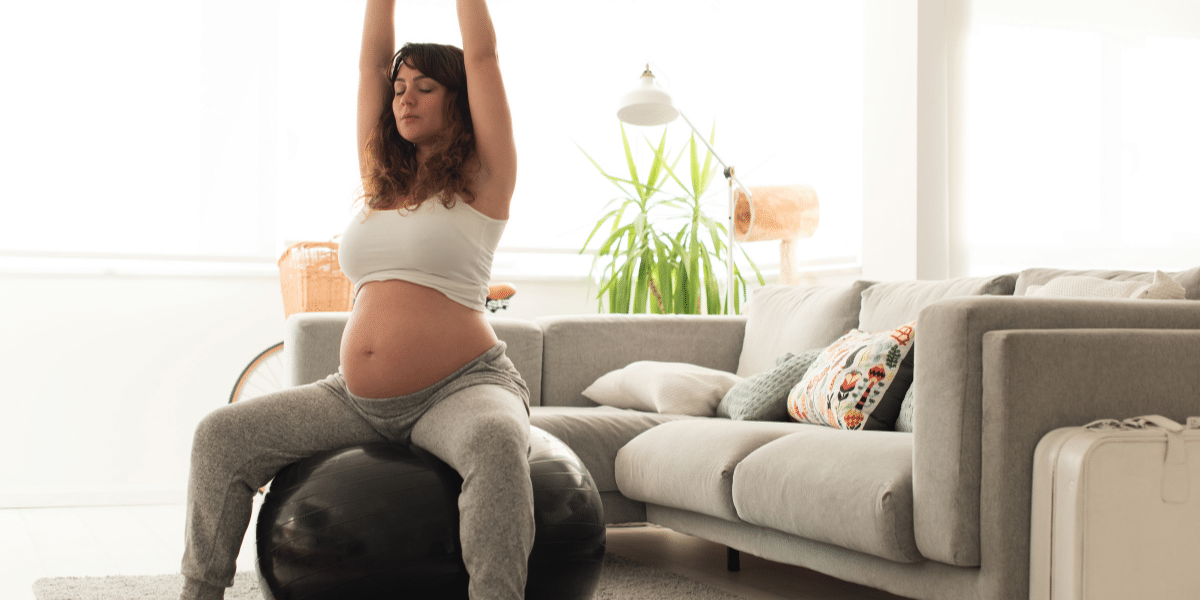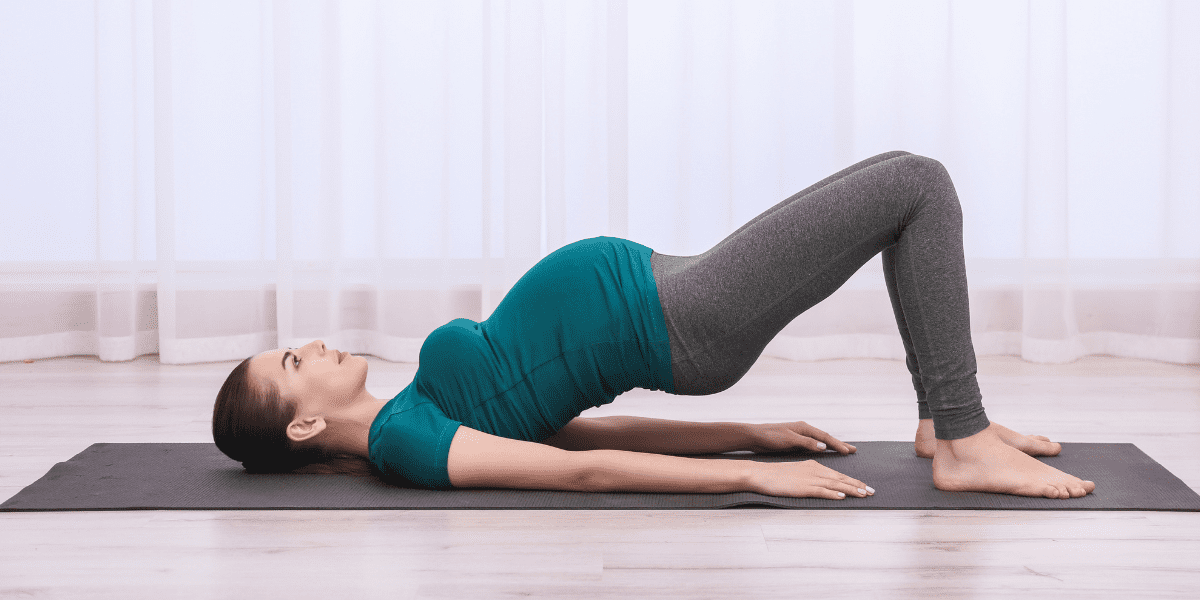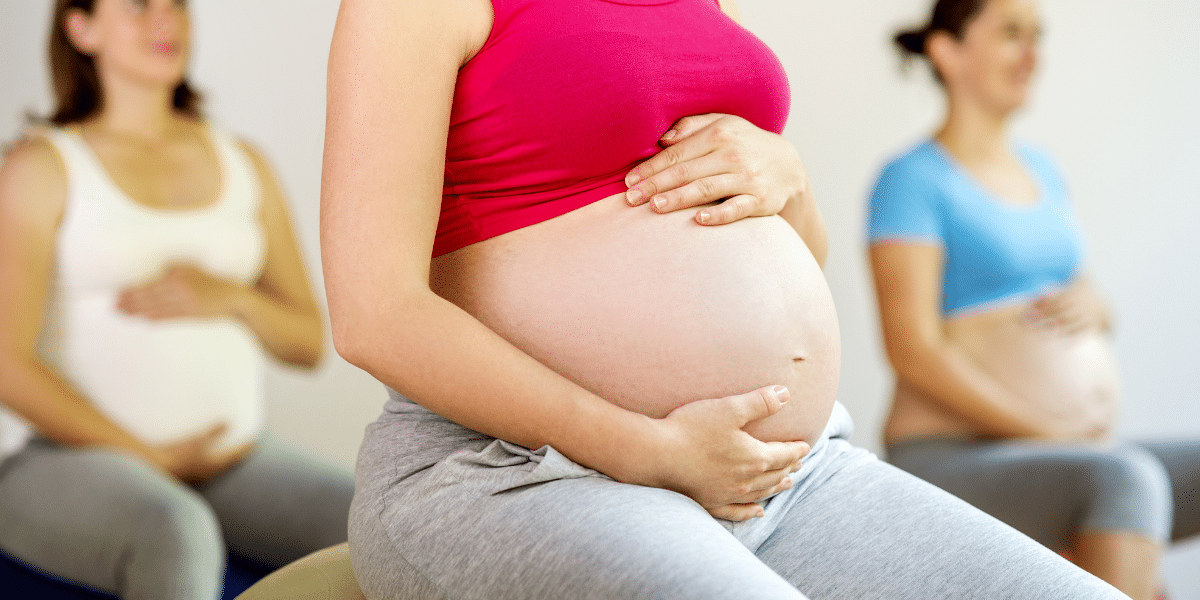Preparing your body for birth and beyond
Keeping fit and healthy during pregnancy is important for both you and your baby. If you want to retain or improve your core strength and decrease the amount of back pain that you get while pregnant abs exercises will be beneficial.
If you have good core strength the likelihood is that your labor and recovery process will be easier.
As an Amazon Associate I earn from qualifying purchases. The links below may be affiliate links. Please read my disclosure policy for more information.
Changes in your abs during pregnancy?
As your pregnancy progresses you will, of course, notice a change in your stomach as your baby grows. You may also notice a ridge that accentuates from underneath your breastbone down to the center of your stomach.
This is called diastasis recti and is formed due to the gap between each side of your abs. The left and right abdominal muscles create a gap in approximately 50% of pregnant women.
The gap usually develops during the latter stages of the first trimester and can widen as your baby grows. If you have been pregnant before and go on to have more children then there is an increased risk of diastasis recti.
For some women, the diastasis recti will rectify itself in the weeks and months following the birth of your baby, but for others, the gap remains. If, after 8-10 weeks your gap remains then you should contact your doctor as this could lead to back pain in later life.
You will usually be given exercises that will help your abdominal wall muscles to reposition after pregnancy.
Even if you do not experience diastasis recti your body will come under a lot of strain as your baby grows and your body stretches. So that you are as first and healthy as possible and you limit the impact on your muscles you should carry out exercises to keep you strong.
Light workouts are possible—with the support from your doctor and pre-natal team and abs exercises are definitely possible.

Careful Exercise
While you are unlikely to be at your fittest when pregnant you can certainly improve your strength and maintain your fitness. If you feel that you need to take advice from a medical professional before carrying out exercise then you should do so, particularly if your pregnancy is difficult.
If you have an exciting gym membership or work with a personal trainer then they are likely to offer advice on a training plan that is suitable for pregnancy or point you to someone that can help. You can also seek pregnancy yoga and pilates classes that will also improve your core strength.
Whatever exercise routine you choose while pregnant remember that there will be days when you feel ill, fatigued, or sore and are, therefore, unable to exercise.
Throughout your pregnancy exercise refine you will need to consider the following:
- Start slow—especially if you have not exercised a lot before you were pregnant. While you may be keen in the early days be careful not to overdo things
- If you have a usual workout routine then you can carry on with it during the first trimester and long as you check in with your health practitioner first
- As you progress into the second and third trimester you should start to decrease the intents of your exercises, both in terms of the length of your workout and what exercises you are doing—this is especially the case for any high-impact activity
- After the first trimester, you should cease to carry out exercises on your back (supine positions)
- Be mindful of how much water you are drinking as you will not want to dehydrate when working out. As your hormones fluctuate you may become hotter than normal and will overheat if exerted under hot and humid conditions
- Be careful of exercises that are fast-paced as you will need to work with slower movements rather than sudden turns and twists, for example
7 of the best abs exercises for your pregnancy workout
Warning: Consult your doctor or midwife before beginning any of these exercises
There are lots of safe exercises to do while you are pregnant and will have an overall benefit for you and your baby. If you are used to intense workouts these exercises may feel too gentle but if you are consistent in doing them you will reap the rewards.
Here are a few of our favorite abs exercises suitable for pregnant women:

1. Core breathing
A simple exercise that will improve your posture and help with your breathing throughout your pregnancy and when you are in labor.
- Sit in a comfortable position with your back straight
- Place one hand on your stomach and the other on your chest
- Inhale to take a deep breath and notice how your ribs expand—count to 10
- Exhale the air using a count of 10 and let your ribs return to a closed position
- Repeat 8-10 times unless you feel too tired
2. Sitting knee lift
- Sit on the edge of a sturdy chair.
- Lay your feet flat on the floor under the knees.
- Face your palms downwards under the hips.
- Contract your abdomen slowly by bending your right knee so that it tilts your pelvis
- Gently bring your right knee towards your chest and begin to exhale.
- Inhale and lower your right foot to starting position on the floor
- Repeat with your left leg.
3. Seated ball stability hold
You may have been advised to buy an exercise ball that can help build pelvic muscles and core strength and can be used to stay active during the early stages of labor
- Sit on your exercise ball sitting with your back as straight as possible
- You can put your hands to the side to help with your balance
- Inhale from your core lifting your left foot off the ground while raising your right arm over your head.
- Hold 3 seconds and return to your original position.
- Repeat with the left arm and right foot.
You should repeat 2 times on each side for optimum effect but may need to reduce to 1 in your final trimester.
4. Side-lying crunch
- Lie on the floor on an exercise or yoga mat
- Gently roll your body to the right side and bend the knees to a 30-degree angle towards the hips.
- Roll your body to the left side so that your knees are 6in off the floor.
- Make sure your body weight rests on the back of your right shoulder and your shoulder blade.
- Place both hands behind your head so they gentled touch without pulling your neck (
- Curl your torso in an upwards motion so that is in a diagonal position as if you are trying to touch your left knee
- Your right shoulder should rise a little from the floor as you do this
- Bring your arms up to your knees and curl them slightly higher.
- Now put your hands behind the head and return to the starting position.
- Repeat on the opposite side.
You should repeat 2 times on each side for optimum effect but may need to reduce to 1 in your final trimester.

5. The standing crunch
Similar to a sitting crunch but more gentle for every stage of your pregnancy as a sitting crunch will not be suitable for the second and third trimester
- Stand up as straight as possible with your feet at hip-distance apart and your knees bent slightly with your hands at the back of your head.
- Inhale slowly and pull your stomach in as you tuck in your pelvis
- Exhale slowly and crunch forward as you squeeze your abs just as you would do with a traditional crunch on your back
- Repeat between 10 and 15 times (you can do 20 in the first trimester)
6. The standing bicycle
Great for improving your core strength and balance
- Stand with your feet at hip-width apart and your hands at the back of your head and slowly inhale
- Exhale slowly, bringing your right elbow to meet your left knee
- Go back to the original position and repeat with your right foot and left elbow.
- Repeat between 10 and 15 times (you can do 20 in the first trimester)
7. Kegels
Kegel exercises are essential for pregnant women as they can help strengthen your pelvic floor and your vaginal muscles. These exercises will help you on your way and can reduce bladder leakage once you have given birth.
- Sit down on your exercise ball and inhale fully. As you breathe in, let your stomach rise as it fills with air then gently exhale to let it out
- Try to count to 10 as you inhale and exhale for the same number of seconds
- Repeat and on the next rep you should tighten your vaginal muscles ( as if you are trying to hold in a wee when you need the bathroom)
- Relax your body and focus on keeping your pelvic floor contracted tightly. Count to five then gently release.
- Repeat between 10 and 15 times (you can do 20 in the first trimester)
If these exercises feel too much at any point or you are in pain, stop and contact your doctor for advice.
